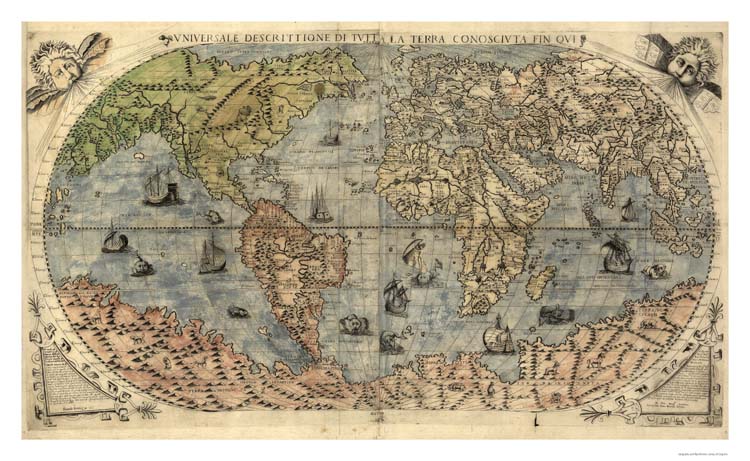Map the Brain–Not Just Neurons
 In any major mapping expedition, shouldn’t the first priority be to survey the uncharted regions? In mapping the brain, that would be charting the neglected half of the brain–glia.
In any major mapping expedition, shouldn’t the first priority be to survey the uncharted regions? In mapping the brain, that would be charting the neglected half of the brain–glia.
The Brain Mapping Initiative announced by President Barack Obama earlier this year seeks to map and monitor the function of neural connections in the entire brain of experimental animals, and eventually in the human cerebral cortex. Several researchers have raised doubts about the project, cautioning that mapping the brain is a far more complex endeavor than mapping the human genome, and its usefulness more uncertain.
I believe that exploring neural networks and developing new techniques to do so are important goals that should be supported vigorously. But simply scaling up current efforts to chart neural connections is unlikely to deliver the promised benefits: an understanding of how the brain produces perception, memories and consciousness, or treatments for diseases such as epilepsy, depression and schizophrenia.
A major stumbling block is the project’s failure to consider that while the human brain contains approximately 100 billion neurons, it contains billions more non-electric brain cells called glia. These reside outside the neuronal ‘connectome’ and operate beyond the reach of tools designed to probe electrical signaling in neurons. Dismissed as connective tissuewhen they were first described in the mid-1800s, glia have long been neglected in the quest to understand electrical signaling in neurons.
Recent research is revealing that glia can sense neuronal activity and control it. Glia operate in diverse mental processes, for instance, in the formation of memories; are central in brain injury and disease; and even the root of various disorders, such as schizophrenia and Alzheimer’s, previously presumed to be exclusively neuronal.
Our understanding of one half of the brain (the part comprised of astrocytes, oligodendrocytes and microglia) lags a century behind our knowledge of neurons. I believe that answers to questions about the brain and public support for a large-scale study are more likely to come from expanding the search into this unknown territory.
To read the full article in this week’s Nature, please see:
http://www.nature.com/news/neuroscience-map-the-other-brain-1.13654
For additional information from the World Science Festival on this topic see this article on the Brain Mapping Salon Held at the WSF. It featured many of the architects of the proposal in a panel discussion of its scope and objectives:
For some videos of the event see: http://worldsciencefestival.com/
This article first appeared on BrainFacts.org
Medical education people aware of both clinical neuroanatomy & learning are usually very interested in your work about the brain & PNS when I provide details
Surprising also to me to see how slowly you ideas are diffusing into scientific circles
There is a clinical trial currently underway at CAMH our big psychiatry centre in Toronto by psychopharmacology prof on minocycline in bipolar depression…..
Douglas, congratulations on the clear results your Nature article had on the September 16 NIH Interim Report (link below). This is very good news for all of us following glial research.
http://www.nih.gov/science/brain/09162013-Interim%20Report_Final%20Composite.pdf
Advisory Committee to the NIH Director INTERIM REPORT
I count 21 occurrences of the term glia in the report(!) This compares to ZERO references in the previous publications of the BRAIN Initiative committee — as Douglas pointed out in Nature. Bravo, sir.
If you have any comments on NIH’s response, I’d like to hear it. I suppose it is possible they are just giving lip service to quiet the chorus of critics that were aroused by your Nature article. But the response seems genuine to me, and hopefully will result in some decent portion of funding going to glial work.
Here’s another review on the Interim Report,
http://www.newyorker.com/online/blogs/elements/2013/09/mapping-the-future-of-neuroscience.html
A Map for the Future of Neuroscience
— William Croft
Thank you. Yes, the Nature Comment seems to have had an impact. There is not much detail about glial research in the interim report, but this is good news to see glia recognized! We are seeing science in action–this is still a work in progress. Let’s hope we engage the public in supporting research on the brain; the source of so many difficult neurological and psychological problems–two and a half pounds of flesh that can think!
Here’s a recent news report on the reaction to the Nature Comment.
http://www.biosciencetechnology.com/articles/2013/09/top-neurologists-urge-obama-map-other-brain